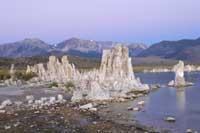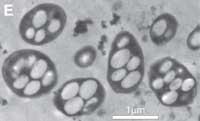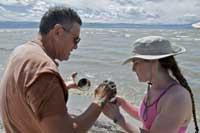Poor aliens and arsenic

They seem to have little imagination. They use aliens for everything: to warn the media that they have found another exoplanet, found water on Mars or on the Moon, or discovered a special atmosphere on another planet or on some moon, involve aliens.
This time they have not played differently. In fact, NASA had to claim that a very special bacterium has been identified in the California Mono Lagoon and, as it could not be otherwise, has been able to unite the news with aliens. The bacteria (a proteobacteria of the Halomonadaceae family) appeared related to the possibility of alien life in the media, and after a few days they forgot both the bacteria and the possible aliens.
But scientists have not forgotten the bacteria. Although at first the discovery seemed revolutionary, many scientists now wonder if it is so great. Proof of this are the headlines of the two articles published on the website of the scientific journal Nature on the subject. Thus said the first: “Sea-bearing microorganisms can lead to a redefinition of the chemistry of life.” The second is fully descriptive: “Toxic response of the microorganism”.

Life is based on concrete elements such as carbon, hydrogen, nitrogen, oxygen, sulfur and phosphorus. All the molecules of all living beings, from proteins to lipids, are made from these six elements, to DNA. However, NASA scientists found that Lake Mono bacteria can replace phosphorus with arsenic. This would therefore question what until then was considered good about life.
The consequences of discovery are not of all kinds. Keep in mind that for living beings, at least for those known so far, arsenic is toxic. For this bacteria, however, it is not toxic and seems to use it to form the basic molecules of your body, including DNA. This questioned the definition of the chemistry of life, the origin of life, the evolution of living beings... and opened the door to hypotheses about extraterrestrial life. If arsenic is not toxic to Lake Mono bacteria, can't similar beings be created elsewhere?
However, the first doubts have been raised before the hypotheses become strong. “It’s a great adaptation story, but it’s not ET,” said Gerald Joyce, a biochemist at the prestigious Scripps Research Institute in La Jolla.

For Joyce and many others, the data shown by discoverers of Lake Mono bacteria is insufficient to conclude that the bacteria use arsenic. In his opinion, the only thing they have shown is that arsenic is able to live in its environment. Moreover, inside the bacteria there are structures similar to vacuoles, which are the cells that store the toxic elements in vacuoles so that they do not harm them.
In addition, NASA has been asked why they have not used mass spectrometry to analyze DNA, as it is easy to see if the bacteria have introduced arsenic into their DNA. However, NASA has not done so, as if they prefer to leave it unresolved. No, it is no wonder that research raises suspicion.
Published in 7K.
Buletina
Bidali zure helbide elektronikoa eta jaso asteroko buletina zure sarrera-ontzian











